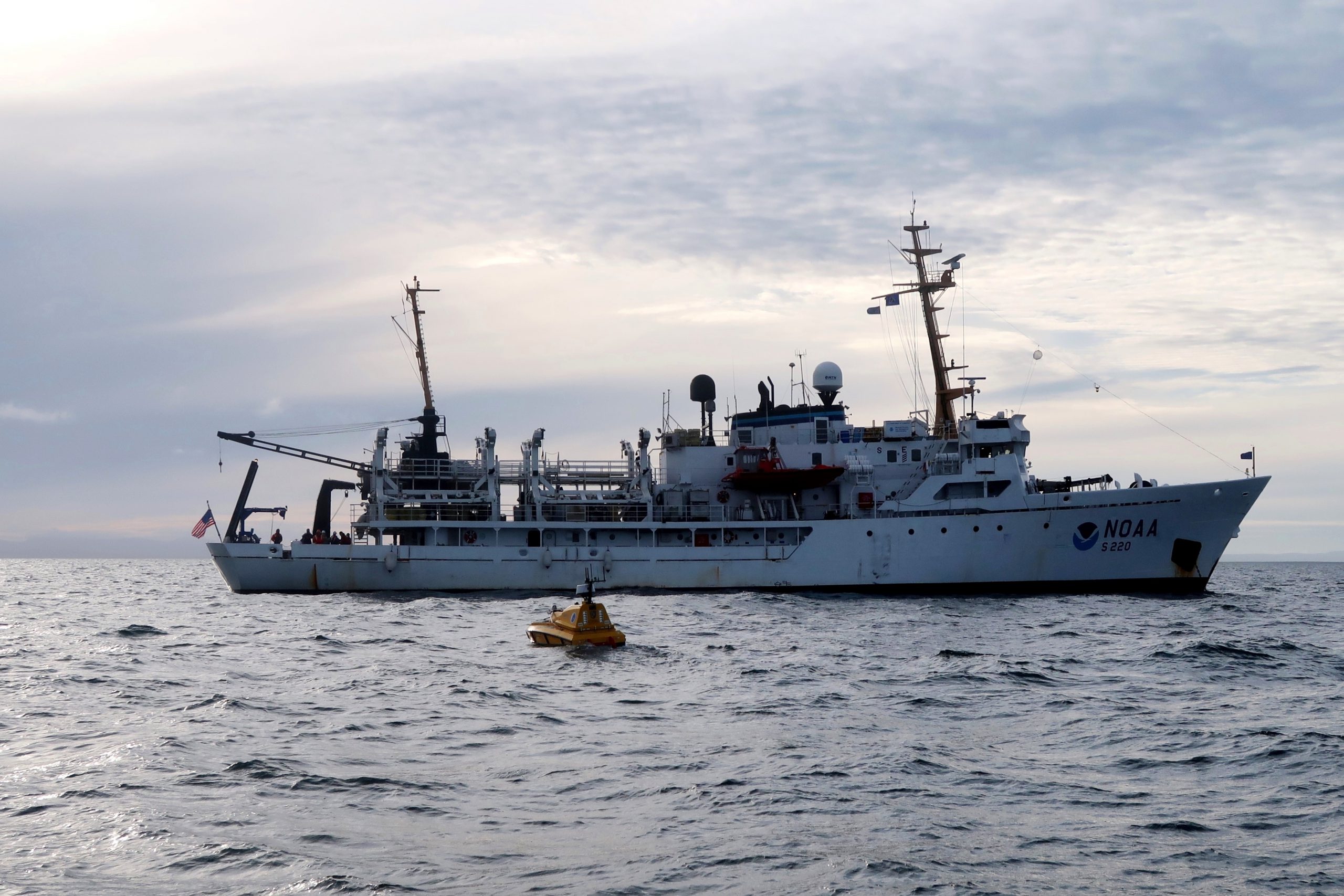By Rob Downs, Office of Coast Survey unmanned systems projects lead
A team composed of research engineers and a graduate student from the University of New Hampshire Center for Coastal and Ocean Mapping/Joint Hydrographic Center (UNH CCOM/JHC) and personnel from NOAA’s Office of Coast Survey are aboard the NOAA Ship Fairweather to test UNH’s BEN (Bathymetric Explorer and Navigator) unmanned surface vehicle (USV). On Saturday, July 28, the Fairweather made the first successful launch of a USV for an operational hydrographic survey from a NOAA vessel in the Arctic. The team conducted four additional deployments, including an extended overnight survey made in coordination with the ship.

Coast Survey will use the data BEN collects to contribute to Fairweather’s Point Hope survey project. With the support from the Fairweather’s command and crew, the team is operating USV hydrographic surveys in coordination with the ship and its survey launches to explore and develop new operational models with unmanned systems, identify and possibly solve shortcomings in the technology, and provide experience to the ship’s crew in the operations and support of unmanned systems.
The Arctic is well suited to testing unmanned systems because relatively low traffic minimizes the risk of encounters with other vessels. In addition, the expense of conducting hydrographic surveys in such remote areas makes the potential gains in the data acquisition capacity from USVs particularly attractive for NOAA survey ships.

BEN is manufactured by ASV Global and is significantly larger (13 feet vs. 3 feet), has a much longer endurance (more than 16 hours vs. 6 hours), and is faster (5 knots vs. 2 knots) than the small USVs operated from other NOAA hydrographic survey vessels. BEN is equipped with a standard suite of hydrographic survey equipment and can independently follow planned survey lines at a distance of approximately 5 miles from the ship. The USV can also be remotely driven when alongside the ship for deployment and recovery.
The capabilities of autonomous survey systems are rapidly advancing, and developing autonomous system technology and procedures is a key piece of Coast Survey’s autonomous systems strategy.

